The United Kingdom’s coastline spans over 7,700 miles, wrapping around England, Scotland, Wales, and Northern Ireland with dramatic cliffs, sweeping beaches, and charming fishing villages. These shores have been shaped by centuries of tides, storms, and human history, creating walking routes that combine natural beauty with cultural heritage in ways few other countries can match. From the subtropical gardens of Cornwall to the wild highlands of Scotland, coastal paths offer something for every type of walker.
Here is a list of 17 exceptional coastal walks across the U.K. that showcase the remarkable diversity of Britain’s seaside landscapes.
South West Coast Path
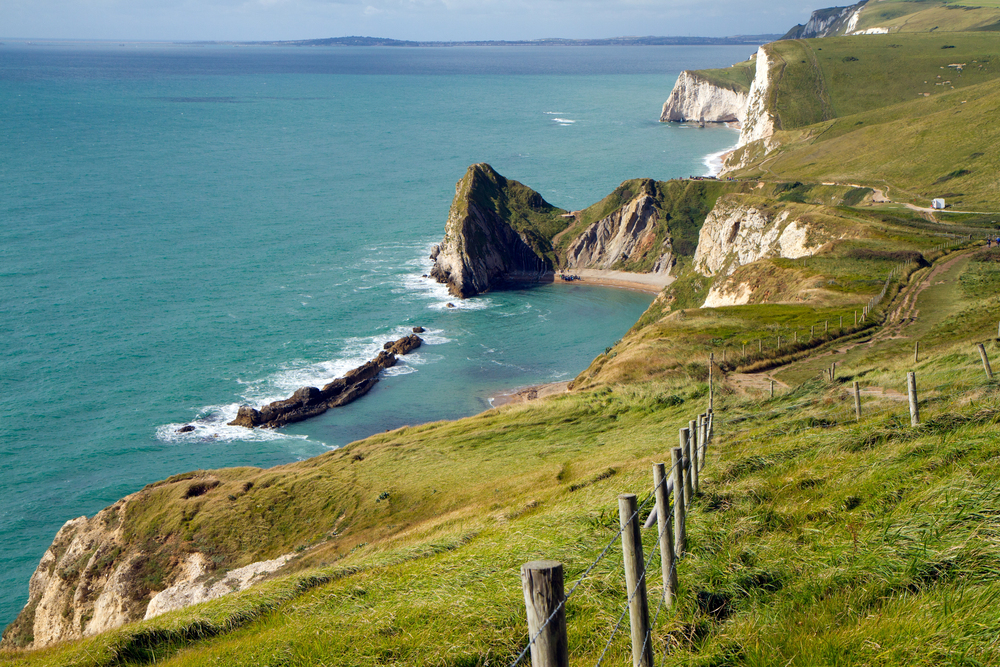
England’s longest waymarked footpath stretches 630 miles from Minehead in Somerset to Poole in Dorset, following the entire coastlines of Devon and Cornwall. The path rises and falls with every river mouth, requiring walkers to climb the equivalent of four Mount Everests if they complete the entire route.
The Cornish section features abandoned tin mines perched dramatically on cliff edges, while Devon offers deep wooded combes (valleys) that meet the sea at secluded beaches. The path passes through timeless fishing villages where colorful boats bob in ancient harbors and seafood restaurants serve the morning’s catch.
Pembrokeshire Coast Path
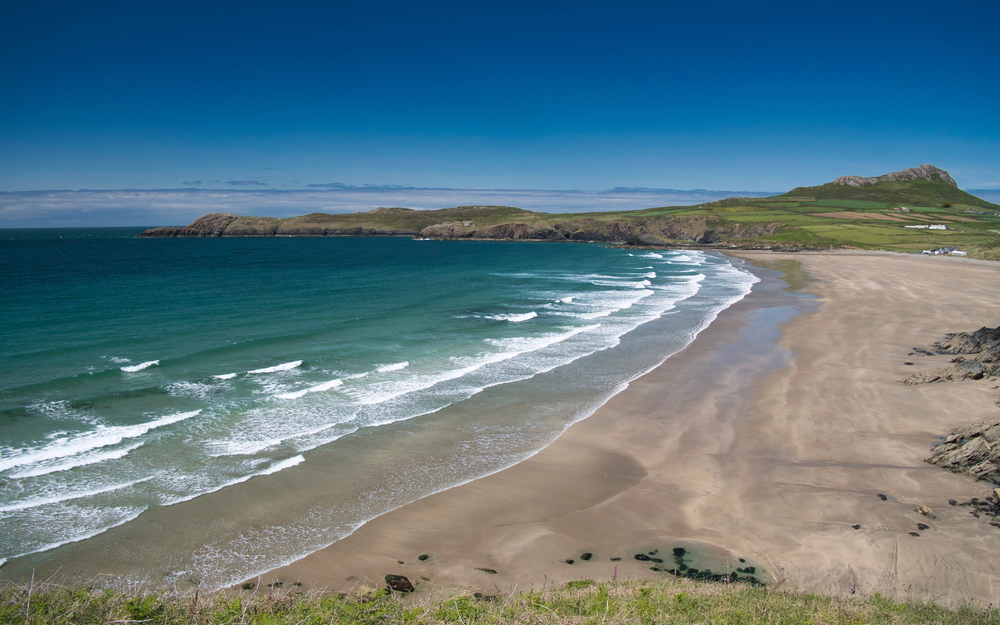
Wales’s most famous walking route covers 186 miles of spectacular shoreline, traversing limestone cliffs, volcanic headlands, and wide sandy bays. The path passes through Britain’s only coastal national park, where Atlantic waves crash against rocks that date back 600 million years.
Spring transforms the clifftops with carpets of pink thrift and yellow gorse flowers, while offshore islands like Skomer and Ramsey host puffin colonies and other seabirds. The route incorporates ancient sites, including St. David’s Cathedral—built in a valley to hide it from Viking raiders—and numerous Iron Age forts that once guarded against invaders from the sea.
Like Travel Pug’s content? Follow us on MSN.
Causeway Coast Way
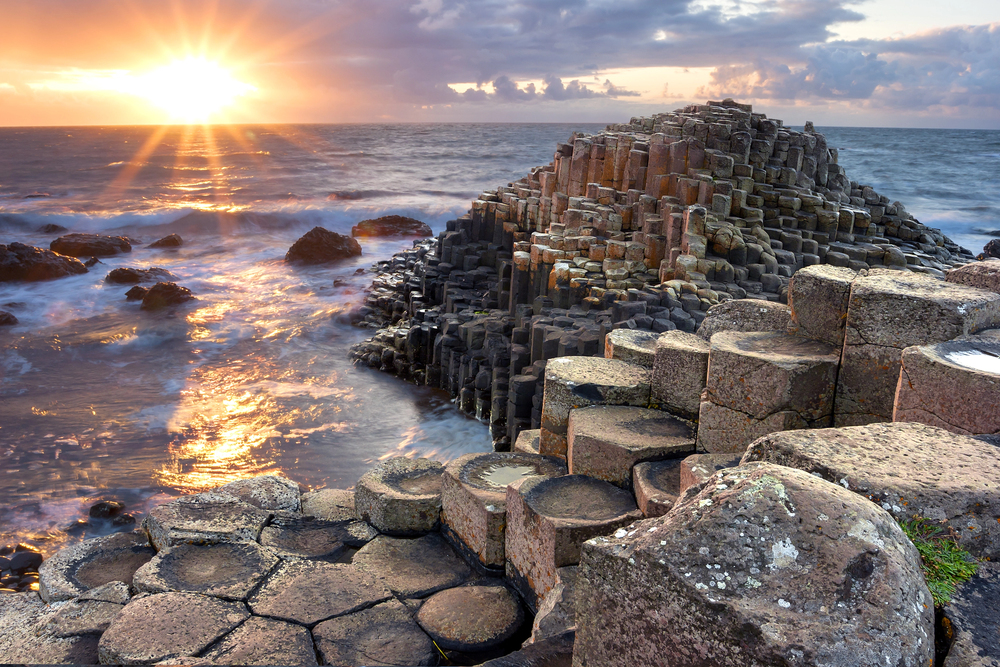
Northern Ireland’s signature coastal trail runs 33 miles from Portstewart to Ballycastle, passing the UNESCO World Heritage Site of Giant’s Causeway. The hexagonal basalt columns rising from the sea were formed by ancient volcanic activity but explained in folklore as stepping stones built by the giant Finn McCool.
Beyond this geological wonder, the path traverses dramatic cliff tops with views to Scotland’s Mull of Kintyre, just 12 miles across the water. The route passes Dunluce Castle—its ruins perched precariously on coastal cliffs—and offers opportunities to cross the vertigo-inducing Carrick-a-Rede rope bridge swaying 100 feet above the churning Atlantic.
Fife Coastal Path
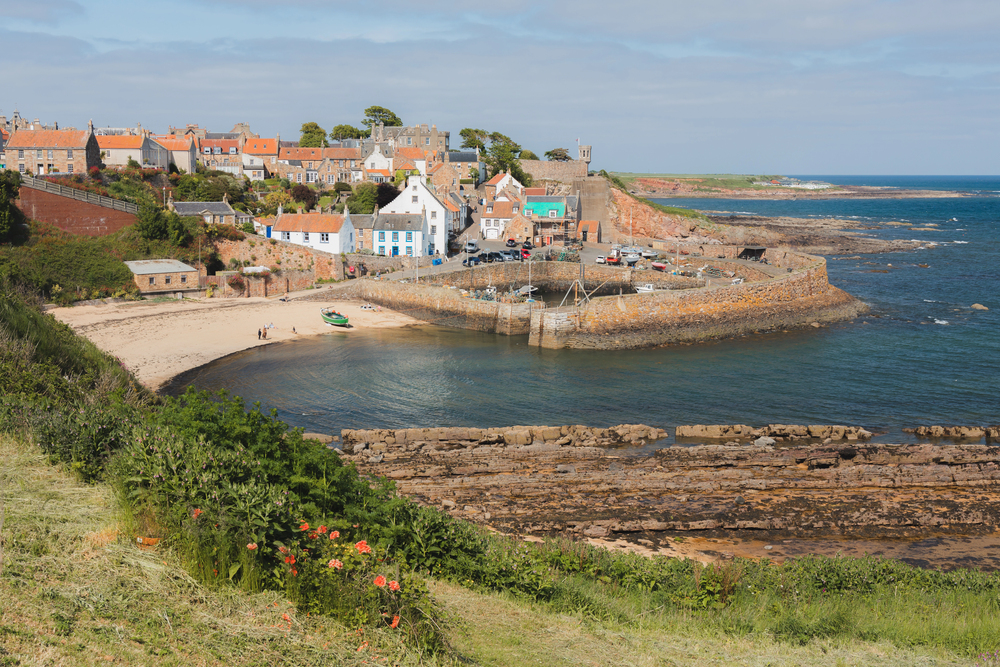
This 117-mile Scottish route skirts the shores of the Firth of Forth and Firth of Tay, combining industrial heritage with pristine beaches and historic university towns. The path begins near Edinburgh and passes through former mining villages before reaching the medieval royal burgh of St. Andrews with its ancient university and famous golf courses.
Wildlife spotters might glimpse dolphins or seals in the waters offshore, while history enthusiasts can explore ruined castles and smugglers’ caves along the way. The path includes sections through the East Neuk fishing villages—Crail, Anstruther, and Pittenweem—with their distinctive Dutch-influenced architecture and working harbors.
Anglesey Coastal Path
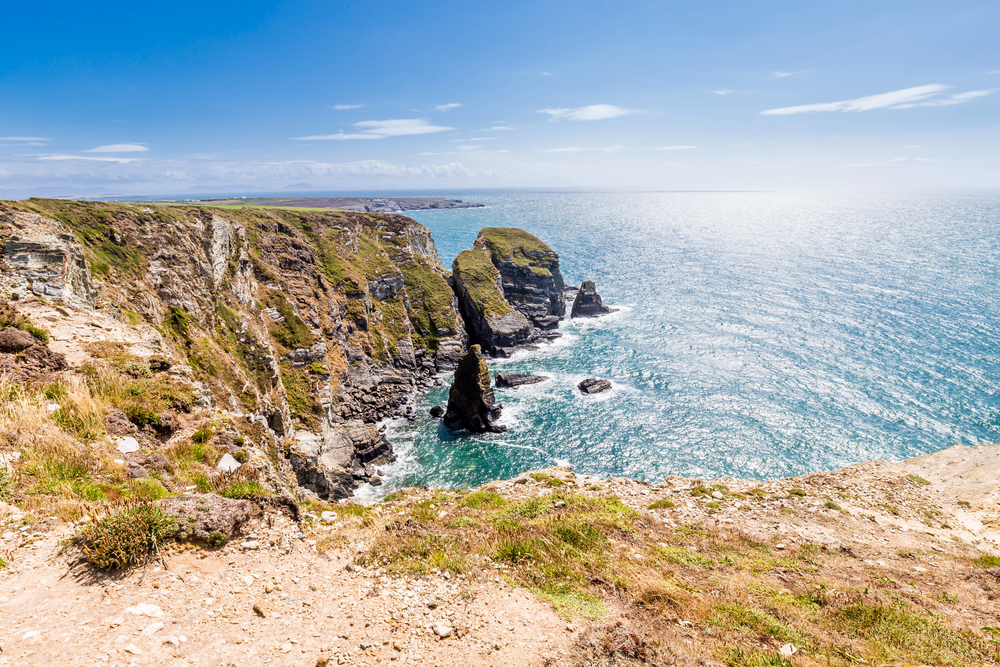
This 130-mile circular route follows the perimeter of Wales’s largest island, showcasing a coastline so significant that much of it has been designated an Area of Outstanding Natural Beauty. The path crosses terrain ranging from wide sandy beaches to salt marshes and dramatic limestone cliffs.
Walkers pass South Stack lighthouse perched on its islet, connected to Anglesey by a narrow bridge spanning a deep chasm where seabirds wheel through the air. Ancient sites dot the route, including the prehistoric burial chamber of Barclodiad y Gawres and centuries-old churches that have withstood fierce Irish Sea storms for generations.
Like Travel Pug’s content? Follow us on MSN.
Norfolk Coast Path
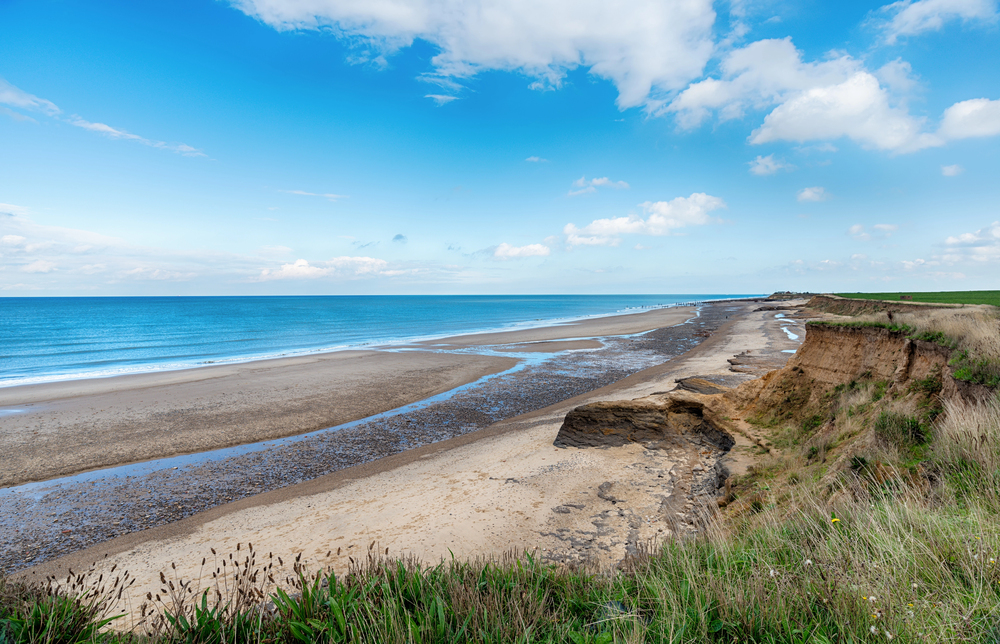
This gentle 84-mile trail follows England’s east coast through a landscape of wide skies, salt marshes, and pristine beaches. Unlike the clifftop paths of southwest England, the Norfolk route offers relatively flat walking alongside expansive nature reserves that provide habitat for rare birds and plants.
The path passes through traditional seaside towns like Cromer—famous for its sweet, succulent crabs—and Wells-next-the-Sea with its colorful beach huts. At Holkham, walkers can traverse one of England’s most unspoiled beaches, where pine forests meet golden sands that stretch seemingly forever at low tide.
Northumberland Coast Path
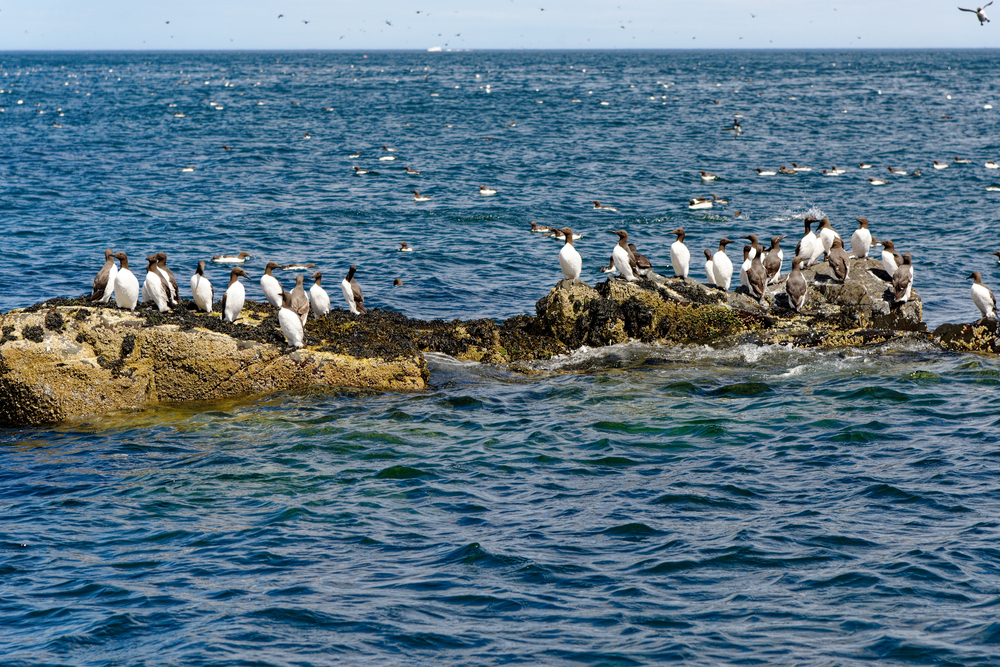
This 62-mile route explores England’s most remote and unspoiled coastline, where vast beaches often remain empty even in summer months. The path links a series of imposing castles—including Bamburgh, Dunstanburgh, and Warkworth—that stand testament to centuries of border conflicts with Scotland.
Holy Island (Lindisfarne) can be reached at low tide across a causeway, revealing the ruins of a medieval priory that helped spread Christianity throughout northern Europe. Offshore, the Farne Islands host thousands of puffins, terns, and guillemots, while grey seals lounge on rocky shores between fishing expeditions.
Gower Coastal Path
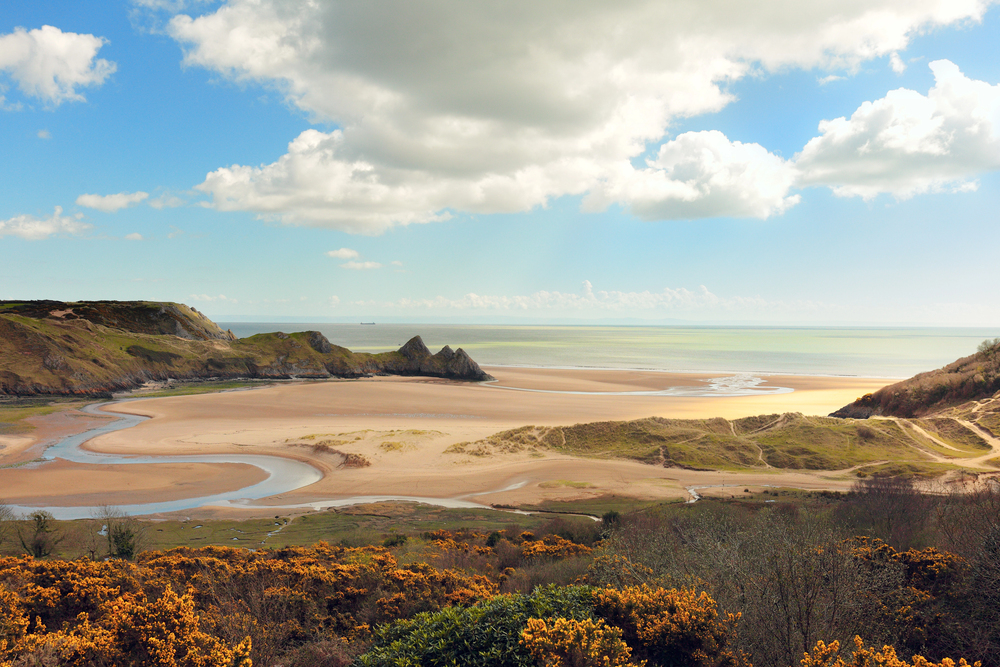
This 39-mile trail circles Wales’s Gower Peninsula, Britain’s first designated Area of Outstanding Natural Beauty. The route connects a series of perfect crescent beaches, including Rhossili—regularly voted among Europe’s best—where three miles of golden sand curve beneath towering cliffs.
Between beaches, the path climbs across limestone headlands where wild ponies graze amid rare flowers that thrive in the alkaline soil. Caves dot the coastline, some containing archaeological remains dating back 30,000 years, including the “Red Lady of Paviland”—actually a young man’s skeleton covered in red ochre in Britain’s oldest ceremonial burial.
Like Travel Pug’s content? Follow us on MSN.
Cleveland Way

The coastal section of this National Trail covers 50 miles along Yorkshire’s dramatic North Sea shoreline, passing through historic towns like Whitby—where Bram Stoker found inspiration for ‘Dracula’—and Robin Hood’s Bay with its smuggling heritage. Tall cliffs provide nesting sites for thousands of seabirds, including kittiwakes, fulmars, and puffins.
The path passes industrial remnants, including old alum works where minerals were extracted to fix dyes in the textile industry. The highest point on England’s east coast at Boulby offers spectacular views, while fossilized ammonites found along the shoreline reveal evidence of the ancient seas that once covered this landscape.
Ceredigion Coast Path
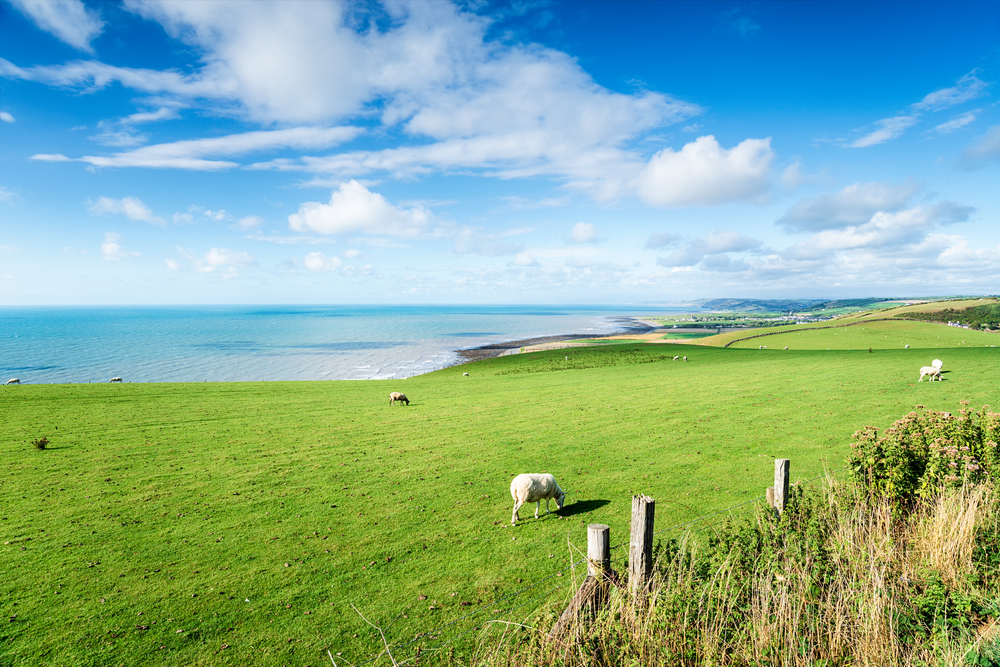
This 65-mile Welsh route connects the Teifi and Dyfi estuaries through a landscape where dolphins regularly play offshore, and red kites soar above the clifftops. The path passes through traditional seaside towns like Aberystwyth with its Victorian promenade and funicular railway, and New Quay where Dylan Thomas found inspiration for ‘Under Milk Wood.’
Between settlements, walkers traverse remote clifftops where few signs of modern life intrude on panoramic sea views. Hidden beaches accessible only by foot or boat provide perfect picnic spots, while the clear waters of Cardigan Bay support one of Europe’s largest resident dolphin populations.
Arran Coastal Way

This 65-mile circular path explores the perimeter of Scotland’s seventh largest island—often described as “Scotland in miniature” for its diverse landscapes. The northern section crosses mountainous terrain with granite peaks rising directly from the shore, while southern sections traverse gentler countryside with sweeping bays.
The path passes ancient standing stones, Bronze Age burial sites, and caves where Robert the Bruce supposedly found inspiration from a persistent spider. Wildlife encounters might include golden eagles overhead, red deer on the hills, and seals, porpoises, or even basking sharks in the surrounding waters.
Like Travel Pug’s content? Follow us on MSN.
Solway Coast Path
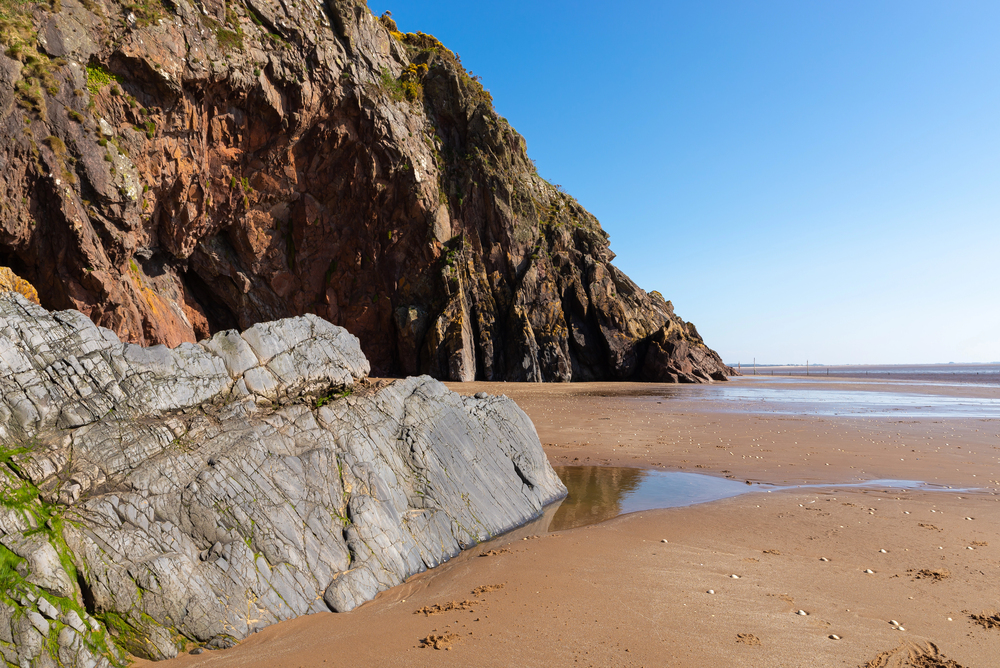
Following Scotland’s southwestern shoreline, this 151-mile route traces the northern edge of the Solway Firth—a wide estuary separating Scotland from England. The path passes through salt marshes that host thousands of overwintering barnacle geese from Svalbard, alongside expansive beaches where brown shrimp fishermen still use horses and carts at low tide.
Historic sites include medieval abbeys, stone circles, and Roman fortifications that once marked the empire’s northwestern frontier. The area’s unique light conditions have attracted artists for centuries—most notably the “Glasgow Boys,” who captured the region’s distinctive coastal landscapes in the late 19th century.
Jurassic Coast Path
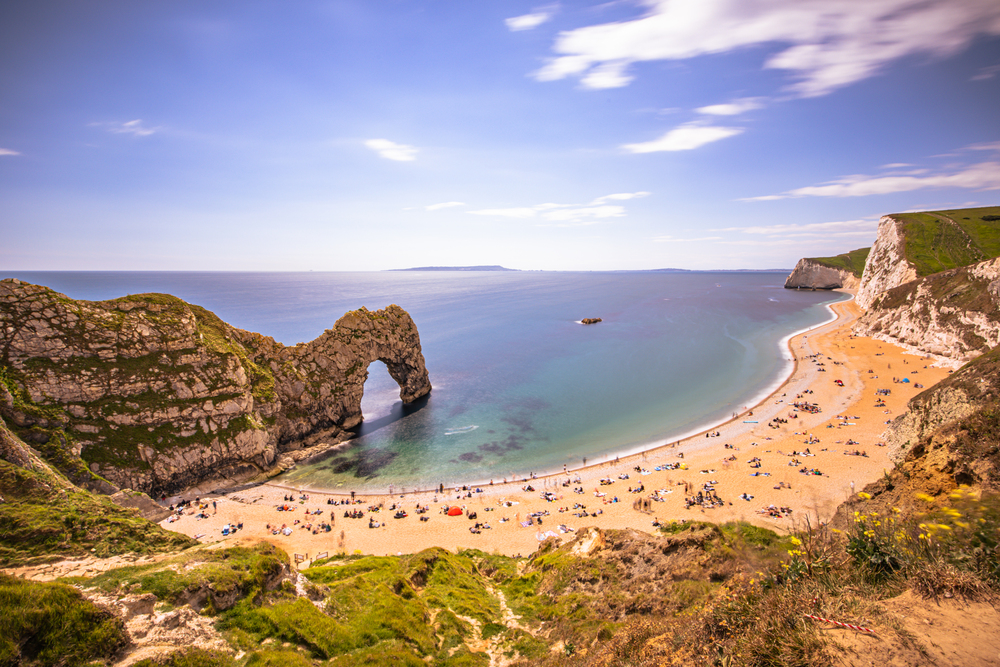
This 95-mile UNESCO World Heritage site in southern England spans 185 million years of geological history, with each section revealing different periods of Earth’s past. The path links distinctive landmarks, including Durdle Door—a perfect natural limestone arch extending into the sea—and Lulworth Cove’s almost circular bay formed by wave erosion.
Fossil hunters scour the beaches below crumbling cliffs, occasionally finding prehistoric treasures exposed by winter storms. The route passes through charming coastal towns like Lyme Regis, the setting for Jane Austen’s ‘Persuasion’ and John Fowles ‘The French Lieutenant’s Woman,’ where literary heritage blends seamlessly with geological wonders.
Giant’s Head Walk
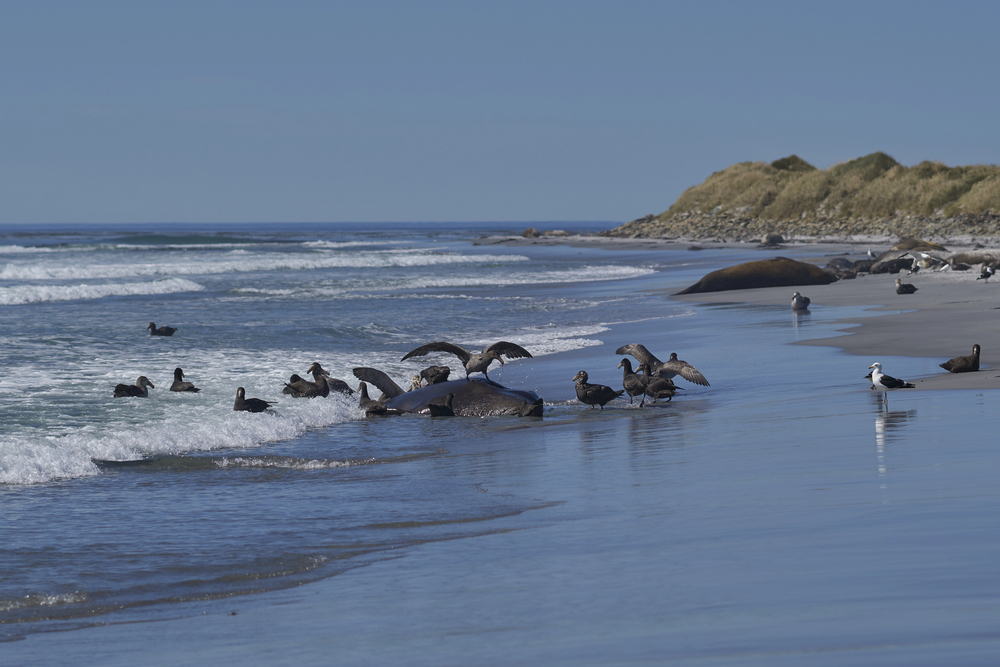
This compact 7-mile route on the Isle of Wight circles the western tip of the island, taking in the famous Needles chalk stacks and Alum Bay’s multicolored sand cliffs. The path climbs Tennyson Down—named for the poet laureate who lived nearby and walked here daily—offering panoramic views across the English Channel.
The route passes Freshwater Bay’s natural sea arch and climbs to the Tennyson Monument before descending past historic Dimbola Lodge, home to pioneering Victorian photographer Julia Margaret Cameron. Though shorter than many coastal paths, the walk packs remarkable variety into its length, combining chalk headlands, sandy beaches, and significant cultural landmarks.
Like Travel Pug’s content? Follow us on MSN.
Moray Coastal Trail
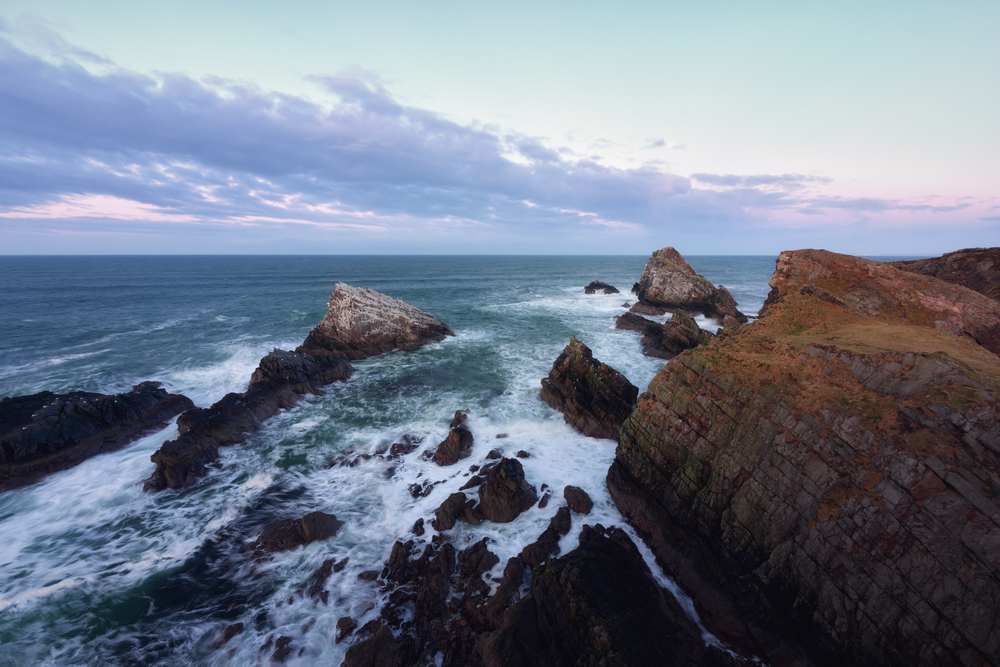
This 50-mile Scottish path follows the southern shore of the Moray Firth from Forres to Cullen across a landscape shaped by fishing communities over centuries. The route passes through historic towns like Findhorn—now home to an eco-community—and Burghead, with its ancient Pictish fort.
Between settlements, walkers traverse pine forests, dune systems, and rocky shores where bottlenose dolphins—the firth’s most famous residents—frequently approach close to land. The path includes sections along abandoned railway lines that once served the fishing industry, providing level walking with sweeping coastal views.
Great Orme Circular
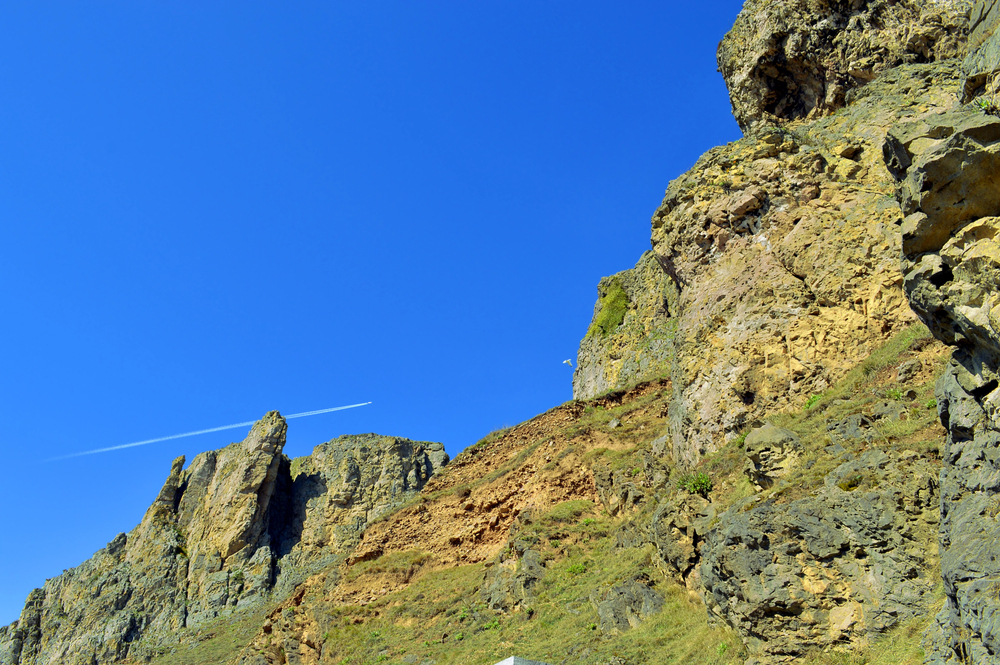
This 4-mile loop around a massive limestone headland near Llandudno in North Wales offers spectacular views in all directions despite its modest length. The path circles the 679-foot summit, passing prehistoric copper mines that were Europe’s largest 3,500 years ago. Wild Kashmiri goats—descendants of a pair gifted to Queen Victoria—roam the steep slopes, while rare plants, including the Great Orme berry (found nowhere else on Earth), grow in sheltered limestone crevices.
The walk passes remnants of World War II defenses, Victorian tourist attractions, and a 12th-century church before returning to Llandudno’s elegant seafront with its perfectly preserved Victorian architecture.
Seven Sisters
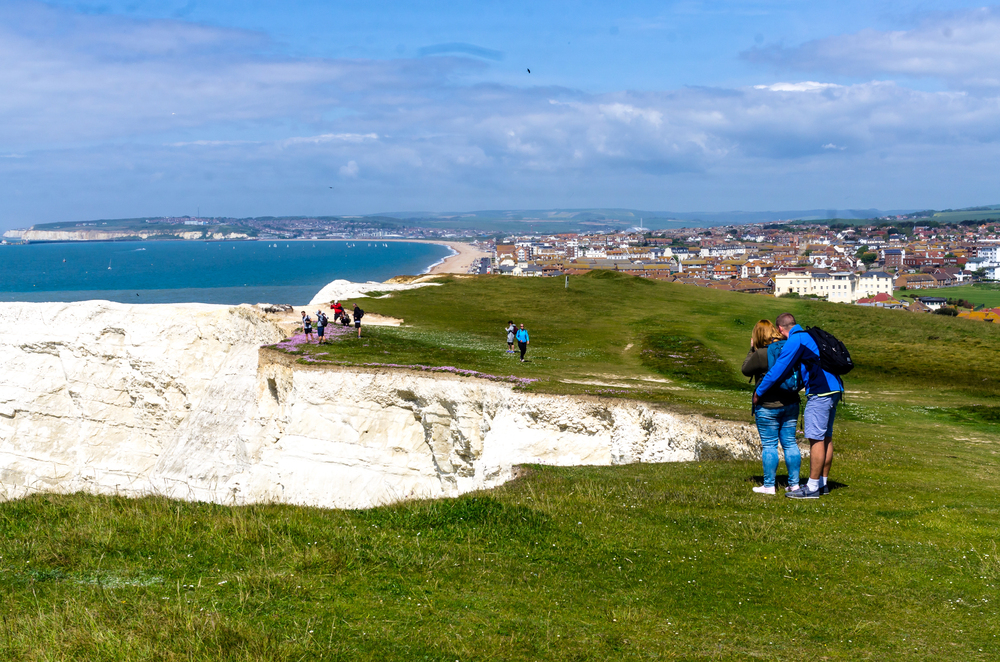
This iconic 13-mile section of the South Downs Way follows Sussex’s chalk cliffs between Seaford and Eastbourne, featuring the famous undulating cliff formation that has starred in countless films and advertisements. The path rises and falls dramatically across seven distinct chalk headlands, with each descent revealing another perfect white cliff ahead.
Cucumber Gap lighthouse stands at the base of the cliffs, accessible only at low tide and frequently threatened by coastal erosion. The route passes through Birling Gap, where a row of coastguard cottages gradually disappears as the cliff edge creeps closer with each winter storm.
Like Travel Pug’s content? Follow us on MSN.
Shorelines of Memory

These coastal paths connect walkers not just with natural beauty but with Britain’s deep maritime heritage. Each step follows routes once taken by smugglers, fishermen, lifeboat crews, and coastal defenders. The constantly changing shoreline shapes both the physical landscape and the characters of communities that have adapted to life beside the sea for countless generations.
Whether seeking solitude on remote headlands or coastal communities rich with history, these pathways provide access to some of Britain’s most precious landscapes—preserved through conservation efforts for future generations to discover one step at a time.
More from Travel Pug

- Cities Growing so Fast You Won’t Recognize Them in 10 Years
- 13 Destinations Where Tourists Regularly Regret Their Trip
- 16 U.S. Cities That Are Quietly Becoming Travel Hotspots
- Where to Travel If You Love Long Bus Rides and Daydreams
- 20 Cities Perfect for Solo Travelers Who Crave Adventure & Culture
Like Travel Pug’s content? Follow us on MSN.
